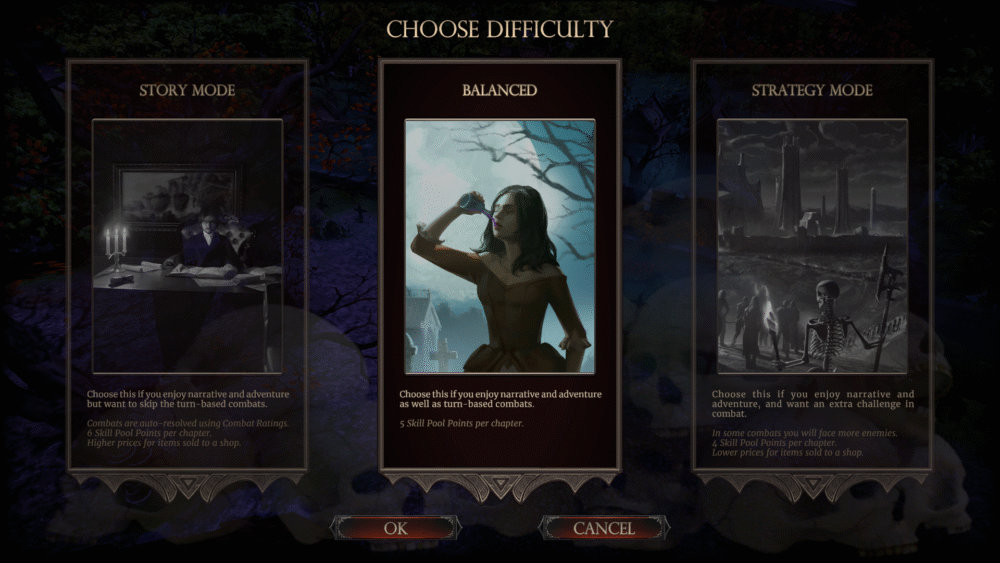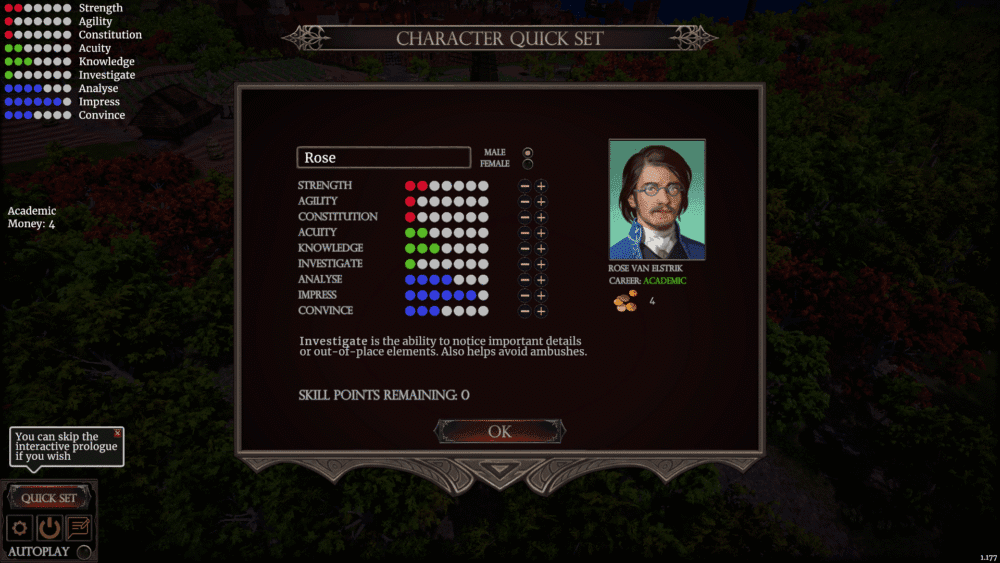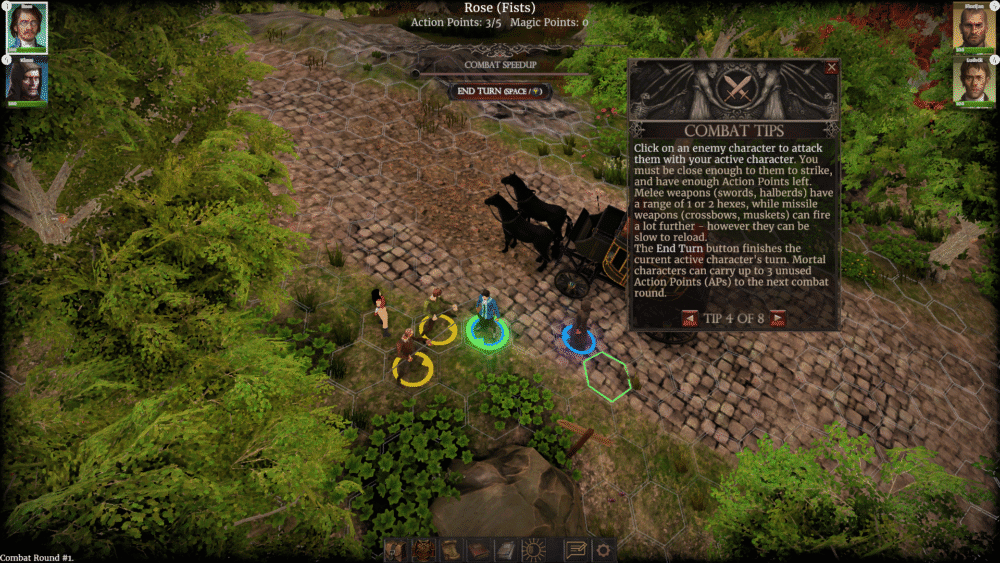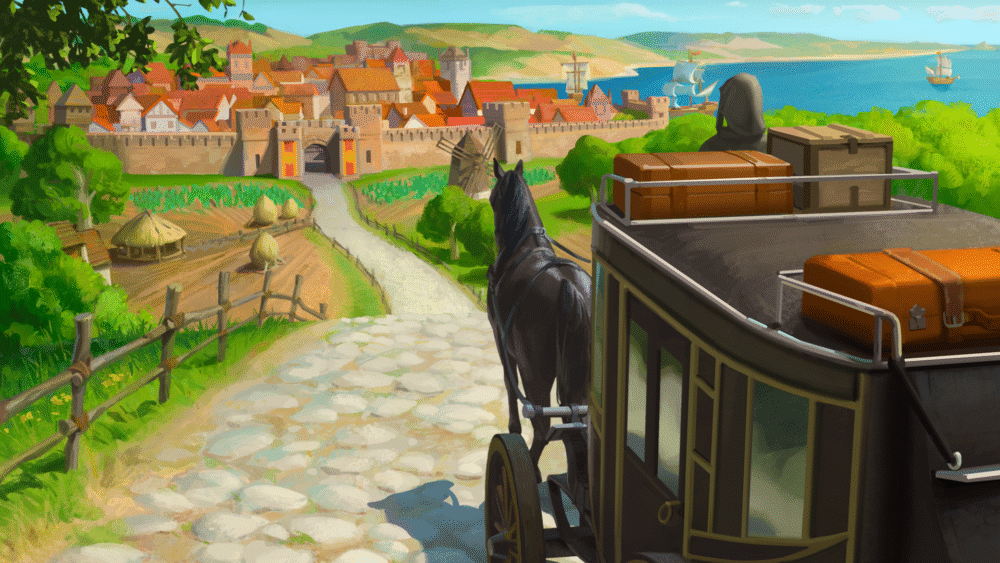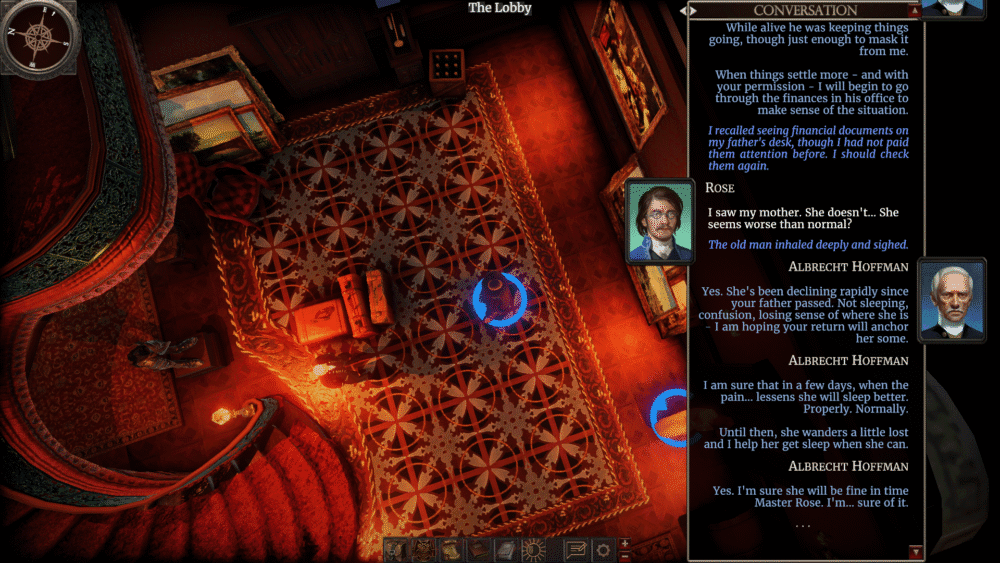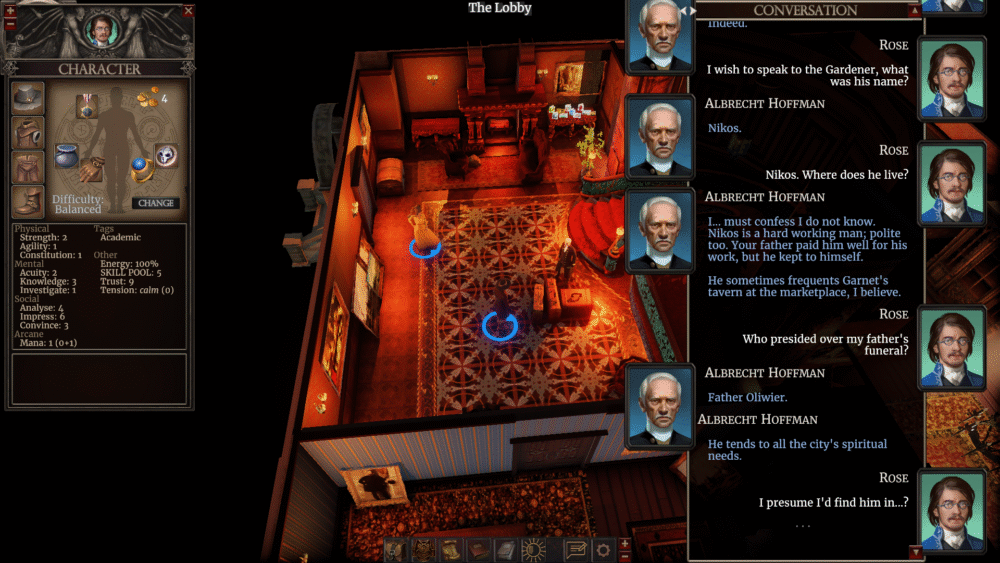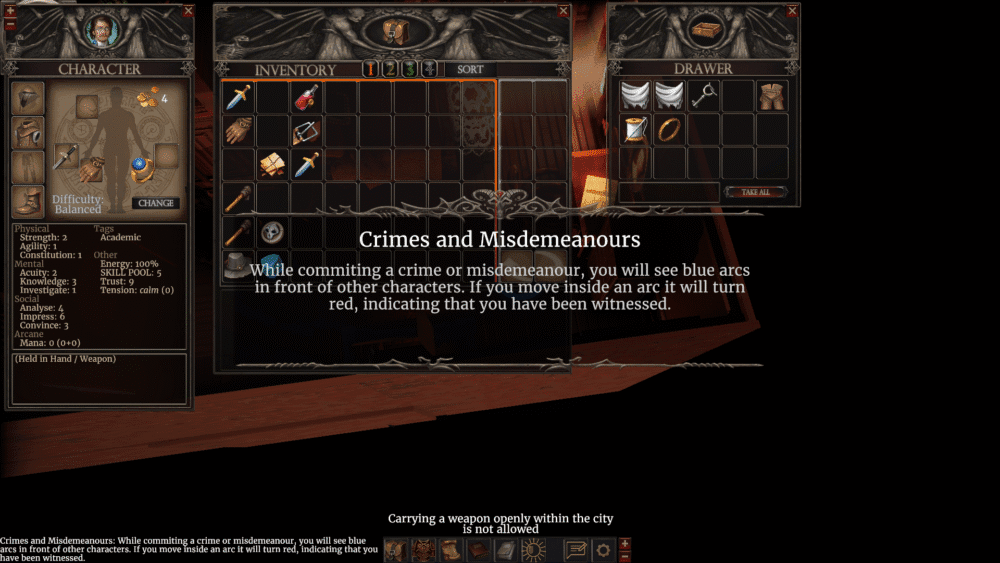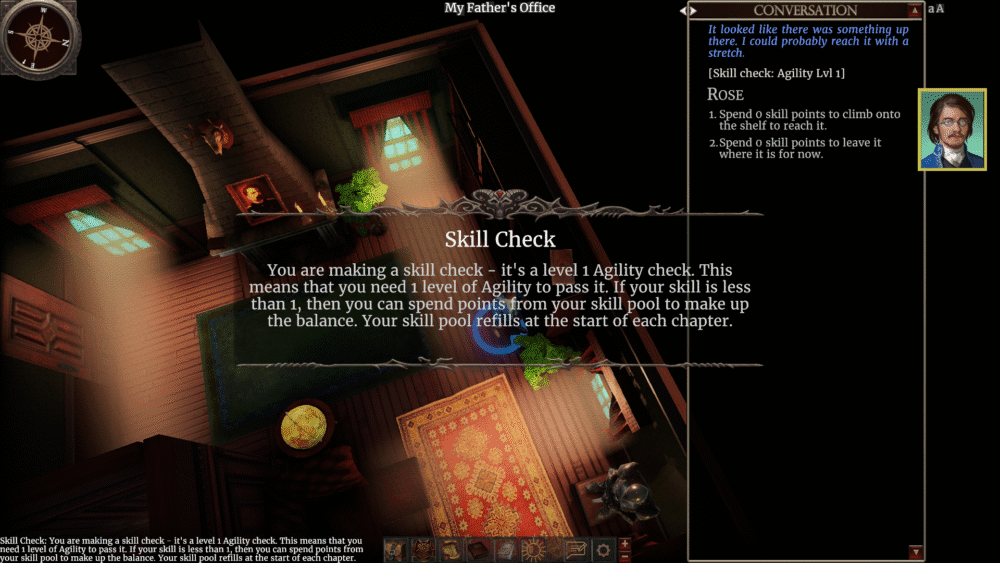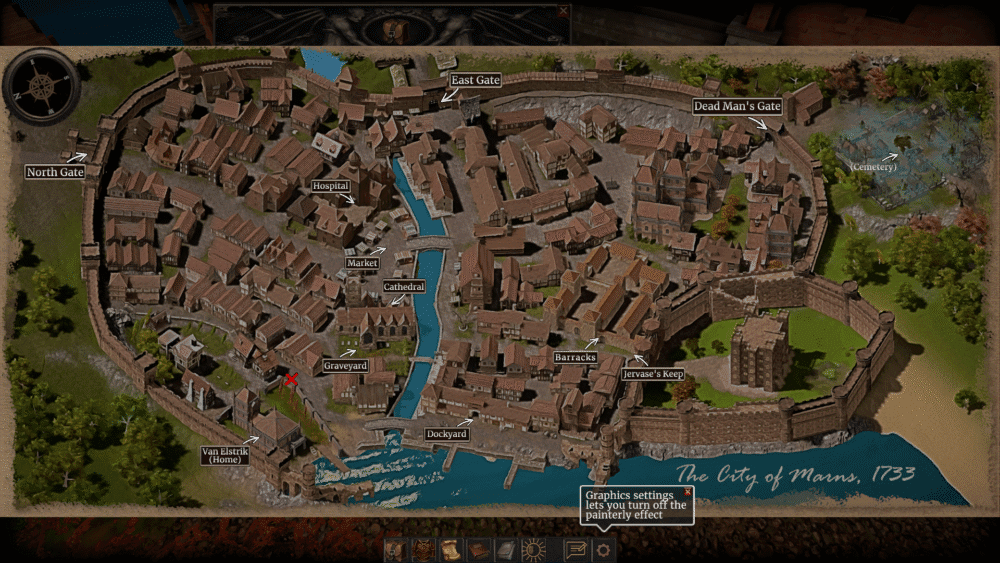I’ve been given the opportunity to review The Necromancer’s Tale on Steam, and I have to say that I’m impressed! This is a game that thrives on its narrative, offering a richly woven and deeply atmospheric experience. If you enjoy games that take their time to unfold, that slow burn as it were, then this might be what you’re after. That said, the pacing can be slow at moments, even staggeringly so at times, which is something worth noting before you dive in.
So, let’s break it down, what it does well, what it does right, and where it tends to fall short, at least in this reviewer’s opinion.
The Highs
The character designs, artwork, soundtrack, and story are nothing short are peak, absolute perfection. At times, I’d even argue its storytelling rivals Baldur’s Gate in the depth it brings to characters and world-building. The artwork not only is extremely well done, but it’s done by a human entirely hand-drawn, giving the game a handcrafted touch, and I want to state that openly as some indie developers try to veer into AI territory to cut corners, that was not done here. This is a visual style that has drawn praise across the community on Steam and myself, with many pointing out the charm of the 180+ unique NPC portraits and painterly gothic aesthetic, chef’s kiss to the dedication and detail.
Another strong point is adaptability to different play styles. You can lean into a heavy, combat-driven experience, or choose normal game mode (how I’ve been playing) or a narrative mode, wherein combat outcomes are determined automatically based on your army’s strength and other factors. For story-first players like me, this is a blessing, it lets you focus on the unfolding plot without being bogged down by combat tactical combat micromanagement.
I found the combat system itself a bit daunting at first, especially the need to equip and unequip weapons, I feel it would be more intuitive if weapons and equipment were a natural state of progression for the game based on human’s physiological reactionary principles, but this may not bother others, as it did with me. That said, I have enjoyed combat despite that minor issue and I enjoy that the battles are straightforward, but can provide a challenge with certain encounters (like dangerous dungeon enemies) providing real challenges. The flexibility here between the varying game modes is one of the game’s best standout strengths.
Story Density & Pacing
Here’s where the game becomes a bit divisive, the pacing is slow. About an hour and a half in, you’ve only established that your character comes from a family who once used dark magic to raise the dead and win a war, and instead of being thrust into epic events from the start, you return home to care for your elderly mother and share drinks with childhood friends. Given, you can roam around your house and learn of your families dire financial straits, which have caused your aging mother and butler a great deal of mental anguish. But, by this point of the game, you want to experience more combat and not a simple highway man tutorial with a foreboding narrative exposition.
Truthfully, this is too drawn out in my opinion, but that doesn’t mean it’s not enjoyable it’s a novel-like approach to world-building. The slower pacing lets you absorb smaller details, hints, and character motivations that pay off later. This isn’t Baldur’s Gate, which throws you straight into danger; it’s a slow burn, more akin to an intricate Gothic novel wherein every chapter builds toward your eventual descent into necromancy and dark magic’s.
Character Interaction & Choice
Now I personally loved this next segment the most and that is how the world reacts to you. The trust system is done in a meaningful way with every word and action it can shift relationships with individuals and factions, and those shifts can have major consequences throughout the game, from alliances and even to betrayal.
Early in the game, you’re given your character’s backstory and during this backstory you are presented with choices that shape their growth from childhood into adulthood and in doing so, you are given the ability to adjust your characters stats based on your choices of progression during this interactive backstory. This section is optional, but I strongly recommend it! It gave my character so much more depth, and I even found myself tearing up at one moment when the narrative mirrored my own life, albeit, I also found it a bit eerie…
Final Thoughts
The Necromancer’s Tale is a rare gem. It’s a story-rich RPG with excellent writing, amazing voice acting, and a score that enhances the game’s atmosphere. It’s not without flaws, which is mainly the pacing, it will potentially test your patience, and the combat (if you choose to engage with it) may feel simplistic to some. But what it offers in terms of atmosphere, character depth, and moral complexity is truly akin to something special.
It may not be Baldur’s Gate, but then again, Baldur’s Gate isn’t The Necromancer’s Tale. This game shines in a unique entry in the atmospheric, narrative-driven space, and if you’re drawn to the idea of a slow burn game with rich characters and novel like depth, with its deliberate descent into darkness where every single one of your choice’s matter, then The Necromancers Tale is well worth your time and money.
I’m an autistic gamer with ADHD, studying Business Administration at the University of the People while learning game development. For over 10 years, I’ve reviewed games, collaborated on projects at global game jams, and attended industry conferences. I love growing with others through our shared passion. Always learning, always pushing forward — sometimes you just have to do something crazy.

